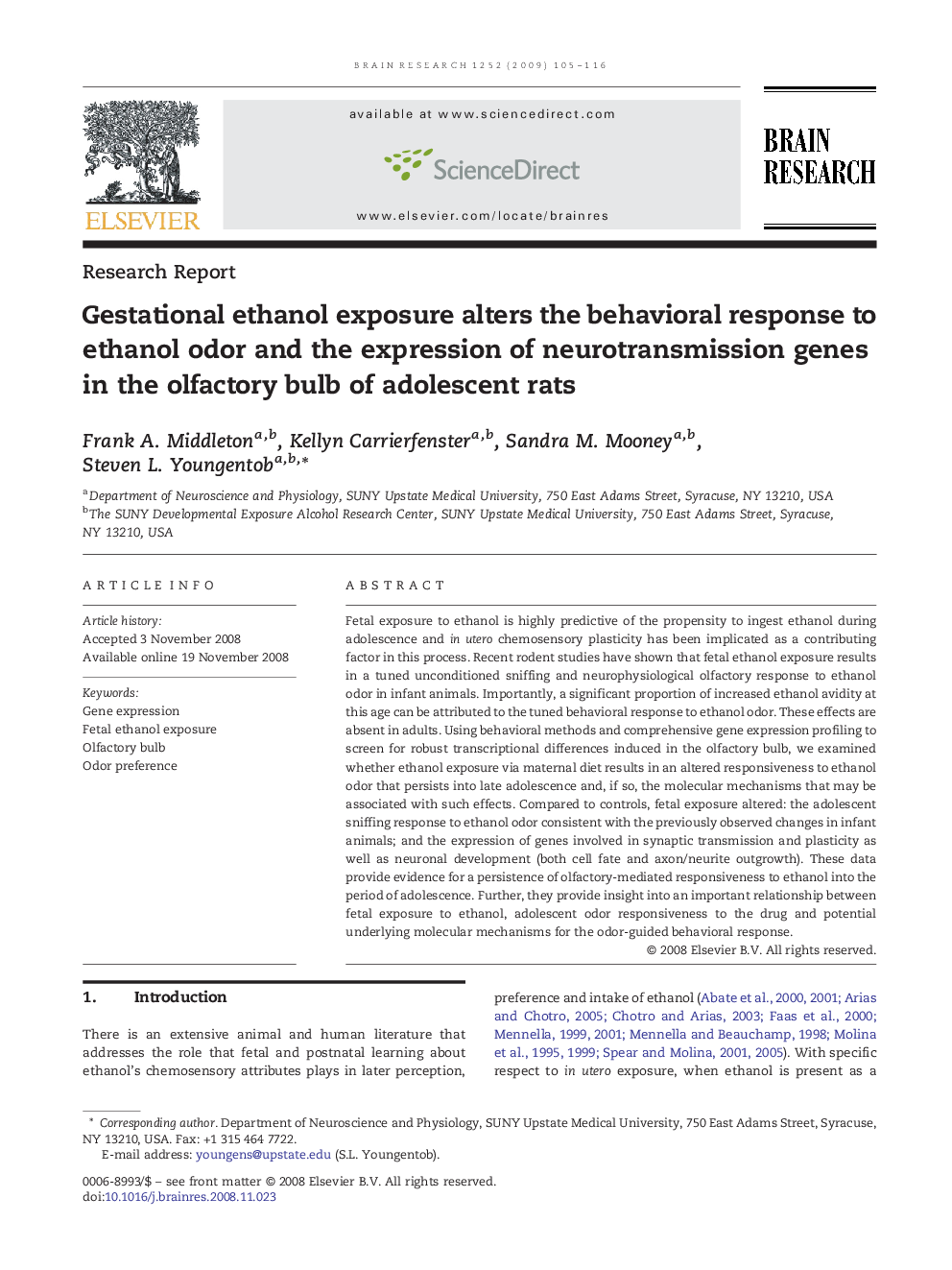| Article ID | Journal | Published Year | Pages | File Type |
|---|---|---|---|---|
| 4328588 | Brain Research | 2009 | 12 Pages |
Fetal exposure to ethanol is highly predictive of the propensity to ingest ethanol during adolescence and in utero chemosensory plasticity has been implicated as a contributing factor in this process. Recent rodent studies have shown that fetal ethanol exposure results in a tuned unconditioned sniffing and neurophysiological olfactory response to ethanol odor in infant animals. Importantly, a significant proportion of increased ethanol avidity at this age can be attributed to the tuned behavioral response to ethanol odor. These effects are absent in adults. Using behavioral methods and comprehensive gene expression profiling to screen for robust transcriptional differences induced in the olfactory bulb, we examined whether ethanol exposure via maternal diet results in an altered responsiveness to ethanol odor that persists into late adolescence and, if so, the molecular mechanisms that may be associated with such effects. Compared to controls, fetal exposure altered: the adolescent sniffing response to ethanol odor consistent with the previously observed changes in infant animals; and the expression of genes involved in synaptic transmission and plasticity as well as neuronal development (both cell fate and axon/neurite outgrowth). These data provide evidence for a persistence of olfactory-mediated responsiveness to ethanol into the period of adolescence. Further, they provide insight into an important relationship between fetal exposure to ethanol, adolescent odor responsiveness to the drug and potential underlying molecular mechanisms for the odor-guided behavioral response.
